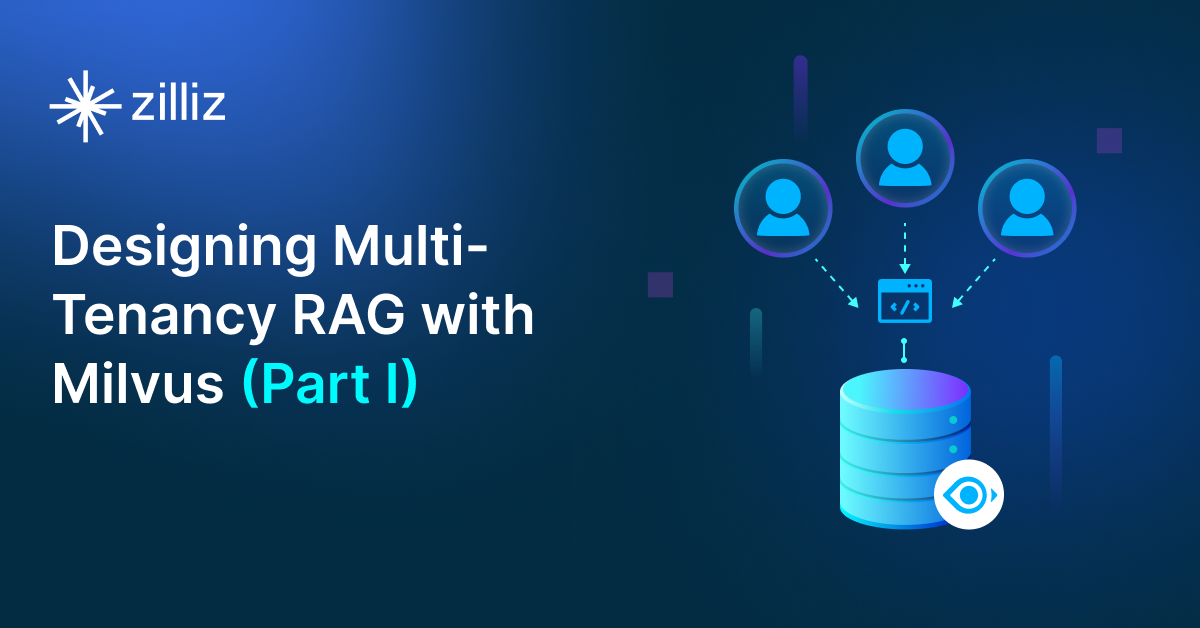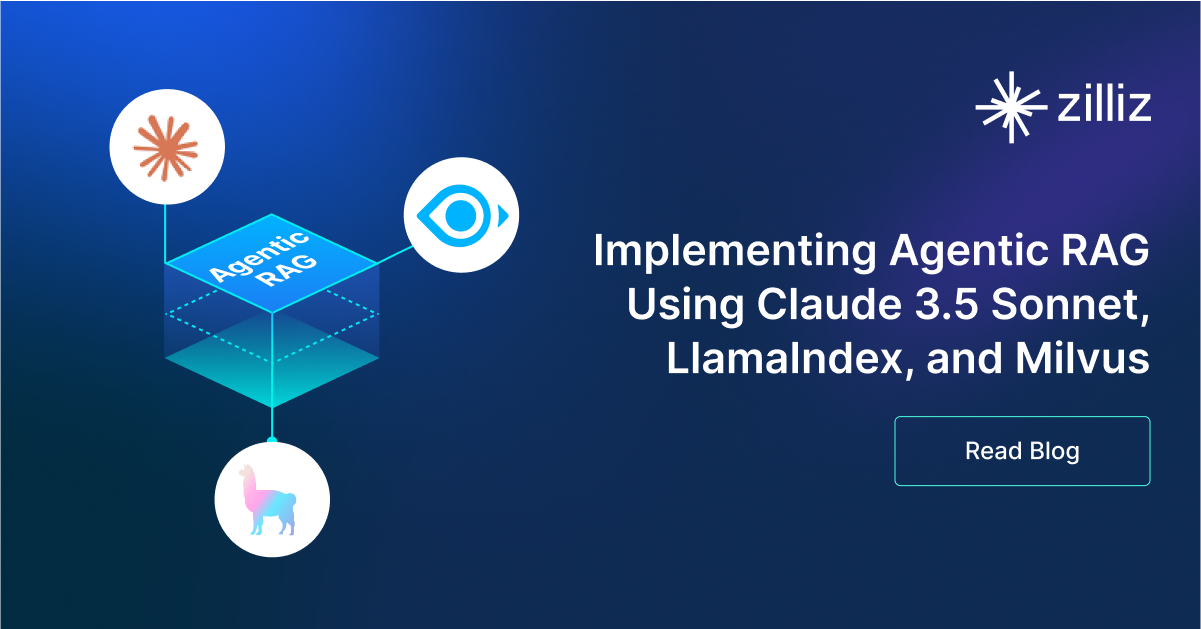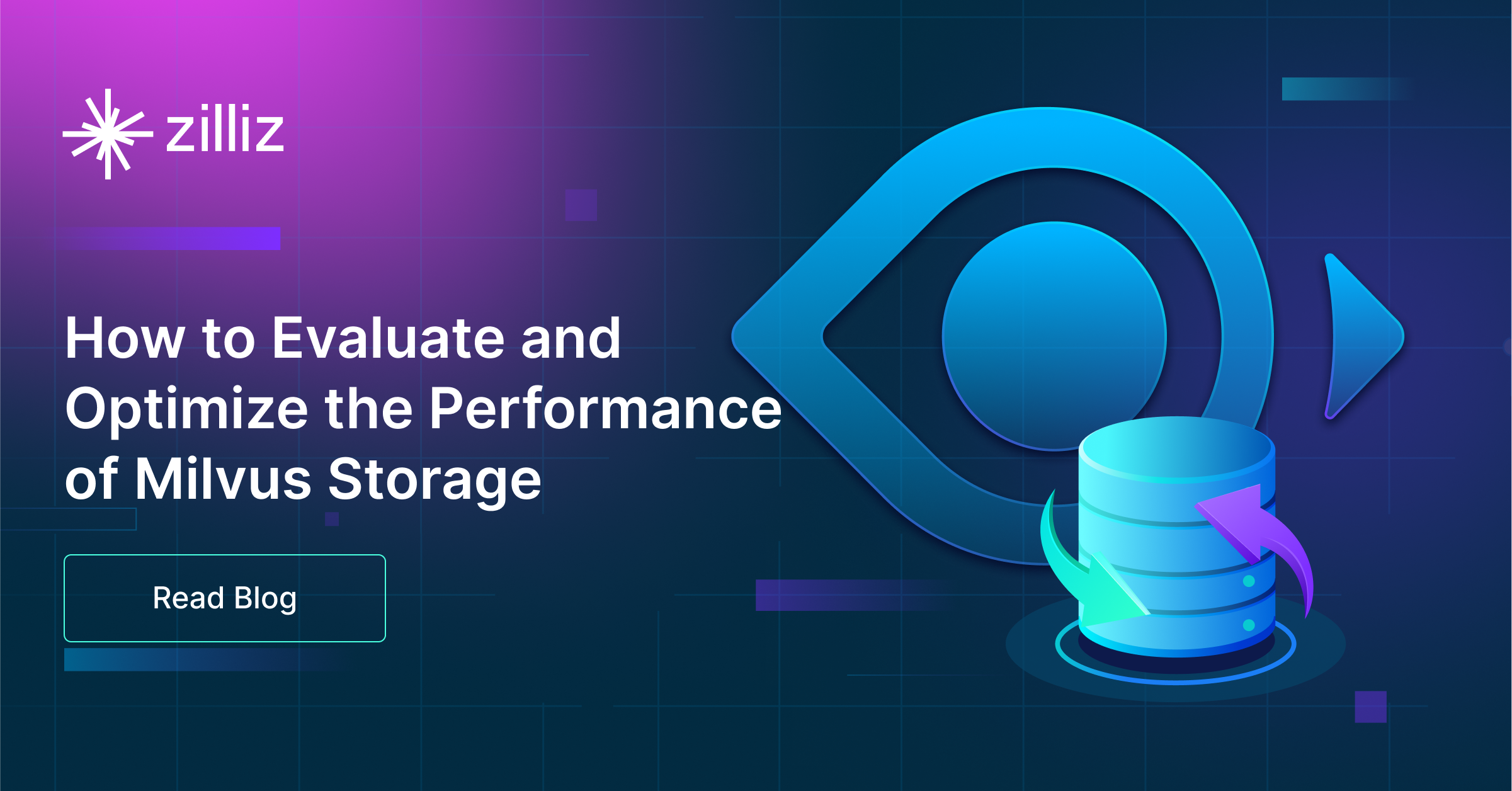Build RAG Chatbot with LangChain, LangChain vector store, Anthropic Claude 3.5 Sonnet, and Cohere embed-multilingual-v3.0
Introduction to RAG
Retrieval-Augmented Generation (RAG) is a game-changer for GenAI applications, especially in conversational AI. It combines the power of pre-trained large language models (LLMs) like OpenAI’s GPT with external knowledge sources stored in vector databases such as Milvus and Zilliz Cloud, allowing for more accurate, contextually relevant, and up-to-date response generation. A RAG pipeline usually consists of four basic components: a vector database, an embedding model, an LLM, and a framework.
Key Components We'll Use for This RAG Chatbot
This tutorial shows you how to build a simple RAG chatbot in Python using the following components:
- LangChain: An open-source framework that helps you orchestrate the interaction between LLMs, vector stores, embedding models, etc, making it easier to integrate a RAG pipeline.
- LangChain in-memory vector store: an in-memory, ephemeral vector store that stores embeddings in-memory and does an exact, linear search for the most similar embeddings. The default similarity metric is cosine similarity, but can be changed to any of the similarity metrics supported by ml-distance. It is intended for demos and does not yet support ids or deletion. (If you want a much more scalable solution for your apps or even enterprise projects, we recommend using Zilliz Cloud, which is a fully managed vector database service built on the open-source Milvusand offers a free tier supporting up to 1 million vectors.)
- Anthropic Claude 3.5 Sonnet: This advanced model in the Claude 3 family is designed for nuanced understanding and creative language generation. With enhanced prompt comprehension and contextual awareness, it excels in complex dialogue, creative writing, and sophisticated content creation. Ideal for applications where deep engagement and high-quality output are paramount.
- Cohere embed-multilingual-v3.0: This model provides high-quality multilingual text embeddings, enabling effective semantic understanding across diverse languages. Its strengths lie in capturing nuanced meanings and facilitating cross-lingual search and analysis. Ideal for applications in global customer support, content recommendation, and multilingual data analysis, it enhances multilingual communication and insight extraction.
By the end of this tutorial, you’ll have a functional chatbot capable of answering questions based on a custom knowledge base.
Note: Since we may use proprietary models in our tutorials, make sure you have the required API key beforehand.
Step 1: Install and Set Up LangChain
%pip install --quiet --upgrade langchain-text-splitters langchain-community langgraph
Step 2: Install and Set Up Anthropic Claude 3.5 Sonnet
pip install -qU "langchain[anthropic]"
import getpass
import os
if not os.environ.get("ANTHROPIC_API_KEY"):
os.environ["ANTHROPIC_API_KEY"] = getpass.getpass("Enter API key for Anthropic: ")
from langchain.chat_models import init_chat_model
llm = init_chat_model("claude-3-5-sonnet-latest", model_provider="anthropic")
Step 3: Install and Set Up Cohere embed-multilingual-v3.0
pip install -qU langchain-cohere
import getpass
import os
if not os.environ.get("COHERE_API_KEY"):
os.environ["COHERE_API_KEY"] = getpass.getpass("Enter API key for Cohere: ")
from langchain_cohere import CohereEmbeddings
embeddings = CohereEmbeddings(model="embed-multilingual-v3.0")
Step 4: Install and Set Up LangChain vector store
pip install -qU langchain-core
from langchain_core.vectorstores import InMemoryVectorStore
vector_store = InMemoryVectorStore(embeddings)
Step 5: Build a RAG Chatbot
Now that you’ve set up all components, let’s start to build a simple chatbot. We’ll use the Milvus introduction doc as a private knowledge base. You can replace it with your own dataset to customize your RAG chatbot.
import bs4
from langchain import hub
from langchain_community.document_loaders import WebBaseLoader
from langchain_core.documents import Document
from langchain_text_splitters import RecursiveCharacterTextSplitter
from langgraph.graph import START, StateGraph
from typing_extensions import List, TypedDict
# Load and chunk contents of the blog
loader = WebBaseLoader(
web_paths=("https://milvus.io/docs/overview.md",),
bs_kwargs=dict(
parse_only=bs4.SoupStrainer(
class_=("doc-style doc-post-content")
)
),
)
docs = loader.load()
text_splitter = RecursiveCharacterTextSplitter(chunk_size=1000, chunk_overlap=200)
all_splits = text_splitter.split_documents(docs)
# Index chunks
_ = vector_store.add_documents(documents=all_splits)
# Define prompt for question-answering
prompt = hub.pull("rlm/rag-prompt")
# Define state for application
class State(TypedDict):
question: str
context: List[Document]
answer: str
# Define application steps
def retrieve(state: State):
retrieved_docs = vector_store.similarity_search(state["question"])
return {"context": retrieved_docs}
def generate(state: State):
docs_content = "\n\n".join(doc.page_content for doc in state["context"])
messages = prompt.invoke({"question": state["question"], "context": docs_content})
response = llm.invoke(messages)
return {"answer": response.content}
# Compile application and test
graph_builder = StateGraph(State).add_sequence([retrieve, generate])
graph_builder.add_edge(START, "retrieve")
graph = graph_builder.compile()
Test the Chatbot
Yeah! You've built your own chatbot. Let's ask the chatbot a question.
response = graph.invoke({"question": "What data types does Milvus support?"})
print(response["answer"])
Example Output
Milvus supports various data types including sparse vectors, binary vectors, JSON, and arrays. Additionally, it handles common numerical and character types, making it versatile for different data modeling needs. This allows users to manage unstructured or multi-modal data efficiently.
Optimization Tips
As you build your RAG system, optimization is key to ensuring peak performance and efficiency. While setting up the components is an essential first step, fine-tuning each one will help you create a solution that works even better and scales seamlessly. In this section, we’ll share some practical tips for optimizing all these components, giving you the edge to build smarter, faster, and more responsive RAG applications.
LangChain optimization tips
To optimize LangChain, focus on minimizing redundant operations in your workflow by structuring your chains and agents efficiently. Use caching to avoid repeated computations, speeding up your system, and experiment with modular design to ensure that components like models or databases can be easily swapped out. This will provide both flexibility and efficiency, allowing you to quickly scale your system without unnecessary delays or complications.
LangChain in-memory vector store optimization tips
LangChain in-memory vector store is just an ephemeral vector store that stores embeddings in-memory and does an exact, linear search for the most similar embeddings. It has very limited features and is only intended for demos. If you plan to build a functional or even production-level solution, we recommend using Zilliz Cloud, which is a fully managed vector database service built on the open-source Milvus and offers a free tier supporting up to 1 million vectors.)
Anthropic Claude 3.5 Sonnet optimization tips
Claude 3.5 Sonnet delivers enhanced reasoning while maintaining a balance between speed and complexity. Optimize by refining retrieval pipelines to prioritize top-ranked context, reducing unnecessary token consumption. Use adaptive chunking methods to provide structured and concise context, ensuring that the model receives only the most relevant information. Implement a dynamic query selection approach, routing simpler questions to Claude 3.5 Haiku for cost and speed efficiency while reserving Sonnet for deeper reasoning. Optimize API request handling with batch processing and response caching to lower latency. Fine-tune temperature and sampling settings, keeping them low for deterministic outputs in retrieval-based tasks. Use system instructions to guide responses, improving consistency and reducing hallucinations. If deploying at scale, leverage parallel query execution and real-time monitoring to dynamically adjust workloads based on system performance metrics.
Cohere embed-multilingual-v3.0 optimization tips
Cohere embed-multilingual-v3.0 is designed for multilingual support, making it highly useful in global RAG systems. To optimize performance, preprocess multilingual input by handling language-specific quirks, such as tokenization and special characters, to maintain consistency across different languages. Implement language detection models to filter and route queries to the appropriate language embeddings, improving both speed and relevance. Use indexing structures like FAISS or HNSW to speed up search across multilingual datasets. Compress embeddings using techniques like quantization to optimize storage while ensuring quality. To handle scalability, leverage distributed storage systems for efficient management of multilingual embeddings. Continuously retrain and update embeddings to reflect new languages or evolving language models.
By implementing these tips across your components, you'll be able to enhance the performance and functionality of your RAG system, ensuring it’s optimized for both speed and accuracy. Keep testing, iterating, and refining your setup to stay ahead in the ever-evolving world of AI development.
RAG Cost Calculator: A Free Tool to Calculate Your Cost in Seconds
Estimating the cost of a Retrieval-Augmented Generation (RAG) pipeline involves analyzing expenses across vector storage, compute resources, and API usage. Key cost drivers include vector database queries, embedding generation, and LLM inference.
RAG Cost Calculator is a free tool that quickly estimates the cost of building a RAG pipeline, including chunking, embedding, vector storage/search, and LLM generation. It also helps you identify cost-saving opportunities and achieve up to 10x cost reduction on vector databases with the serverless option.
 Calculate your RAG cost
Calculate your RAG cost
What Have You Learned?
What have you learned? Congratulations on navigating through this exciting tutorial! You've just discovered how to harness the power of a robust framework, a dynamic vector database, an advanced LLM, and a sophisticated embedding model to create a cutting-edge Retrieval-Augmented Generation (RAG) system. This journey has not only demonstrated how each component fits like a piece of a puzzle but also how they empower each other to deliver extraordinary results.
The LangChain framework acted as the glue that holds everything together, seamlessly integrating the vector database for quick and efficient searches. With the LangChain vector store at your disposal, you can pull relevant data in the blink of an eye, making it the backbone of your application. Meanwhile, the Anthropic Claude 3.5 Sonnet LLM brings conversational intelligence to life, ensuring that your users interact with a system that feels natural and engaging. Let’s not forget the embedding model – the Cohere embed-multilingual-v3.0 – which generates rich semantic representations, enhancing the contextual understanding of the data at hand.
We also shared optimization tips and introduced tools like the free cost calculator, empowering you to manage your resources wisely. Now it's time for you to take all this knowledge and start building, optimizing, and innovating your own unique RAG applications. The sky's the limit, and we can't wait to see what you will create! So dive in, experiment, and let your creativity shine. Happy building!
Further Resources
🌟 In addition to this RAG tutorial, unleash your full potential with these incredible resources to level up your RAG skills.
- How to Build a Multimodal RAG | Documentation
- How to Enhance the Performance of Your RAG Pipeline
- Graph RAG with Milvus | Documentation
- How to Evaluate RAG Applications - Zilliz Learn
- Generative AI Resource Hub | Zilliz
We'd Love to Hear What You Think!
We’d love to hear your thoughts! 🌟 Leave your questions or comments below or join our vibrant Milvus Discord community to share your experiences, ask questions, or connect with thousands of AI enthusiasts. Your journey matters to us!
If you like this tutorial, show your support by giving our Milvus GitHub repo a star ⭐—it means the world to us and inspires us to keep creating! 💖
- Introduction to RAG
- Key Components We'll Use for This RAG Chatbot
- Step 1: Install and Set Up LangChain
- Step 2: Install and Set Up Anthropic Claude 3.5 Sonnet
- Step 3: Install and Set Up Cohere embed-multilingual-v3.0
- Step 4: Install and Set Up LangChain vector store
- Step 5: Build a RAG Chatbot
- Optimization Tips
- RAG Cost Calculator: A Free Tool to Calculate Your Cost in Seconds
- What Have You Learned?
- Further Resources
- We'd Love to Hear What You Think!
Content
Vector Database at Scale
Zilliz Cloud is a fully-managed vector database built for scale, perfect for your RAG apps.
Try Zilliz Cloud for Free


